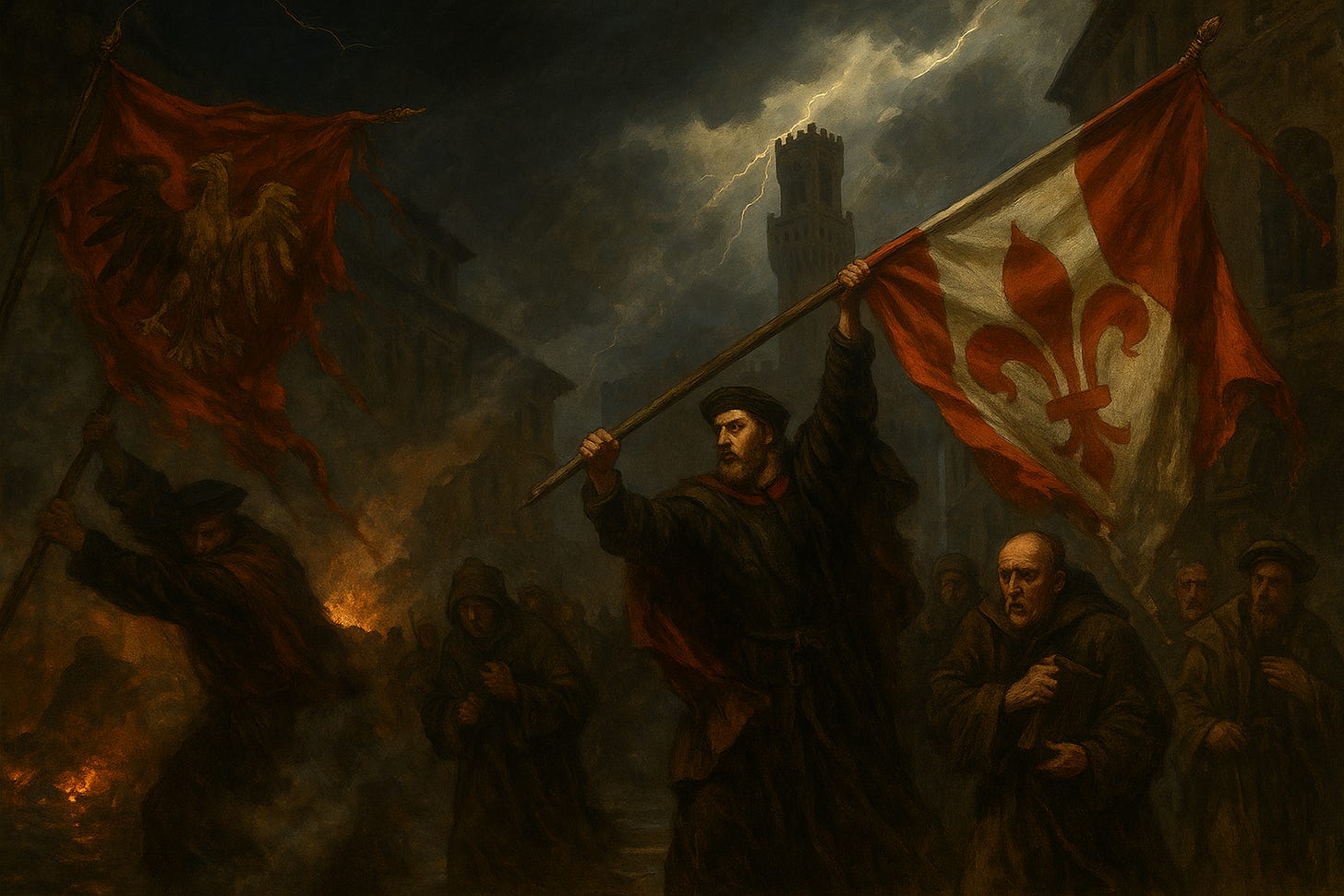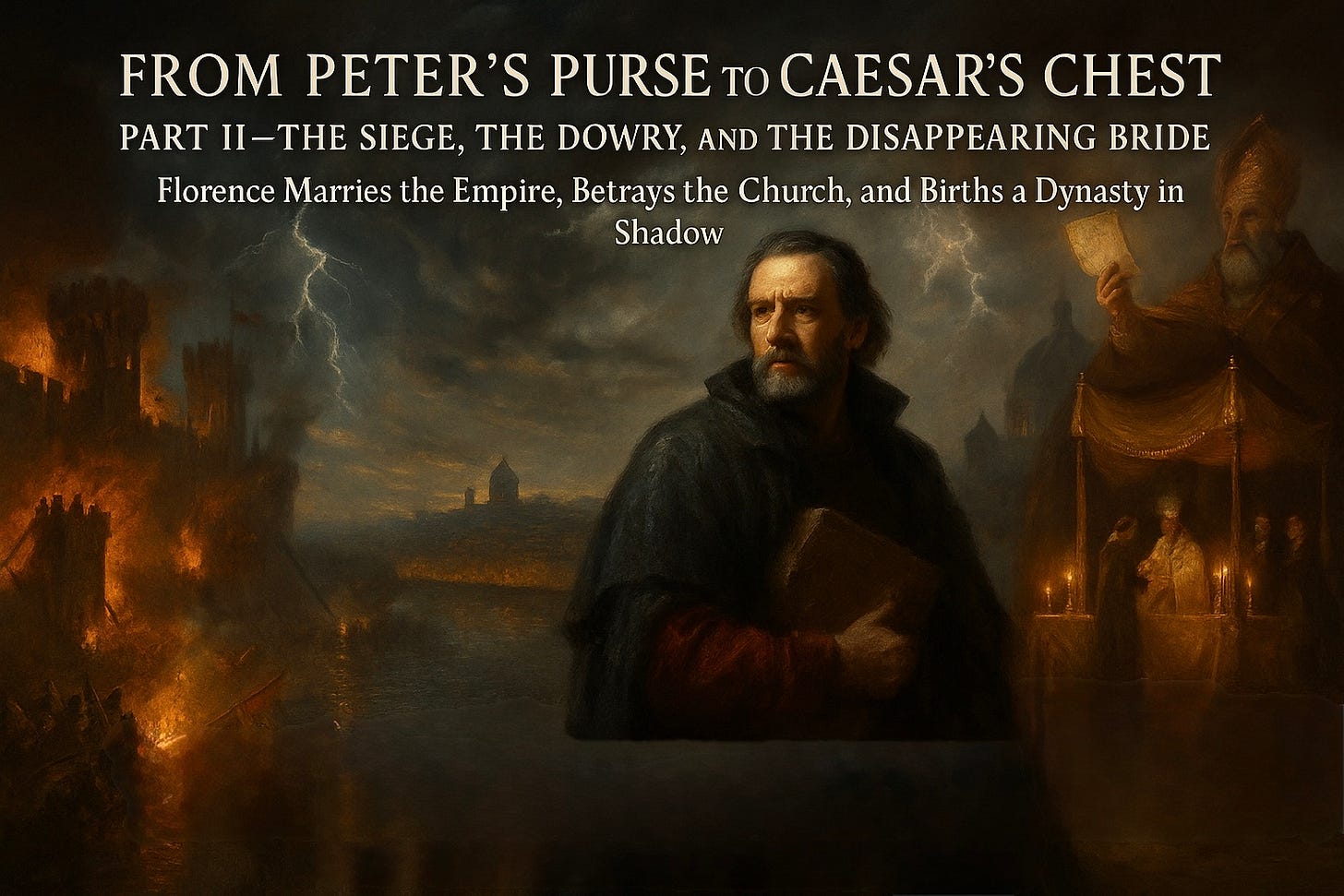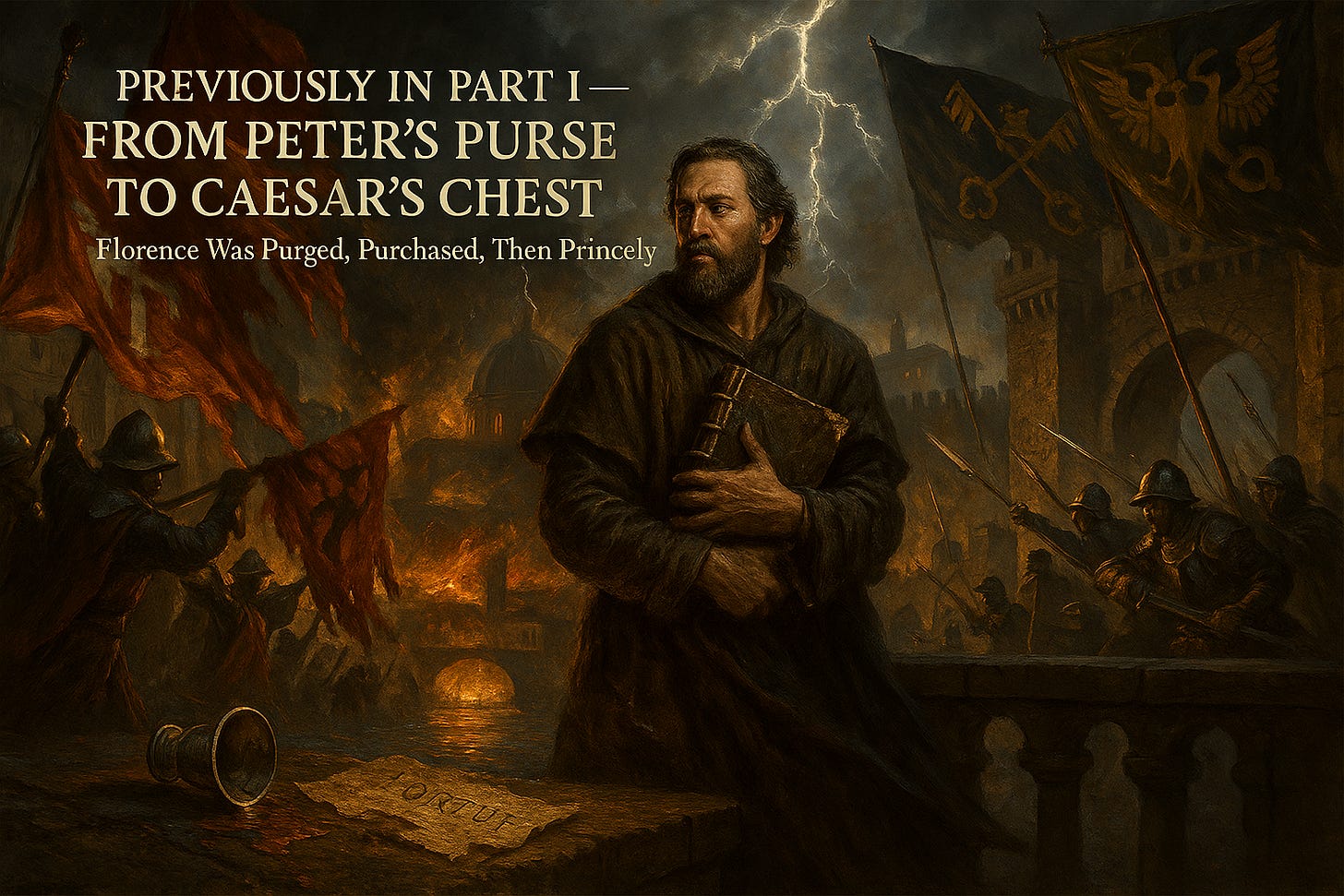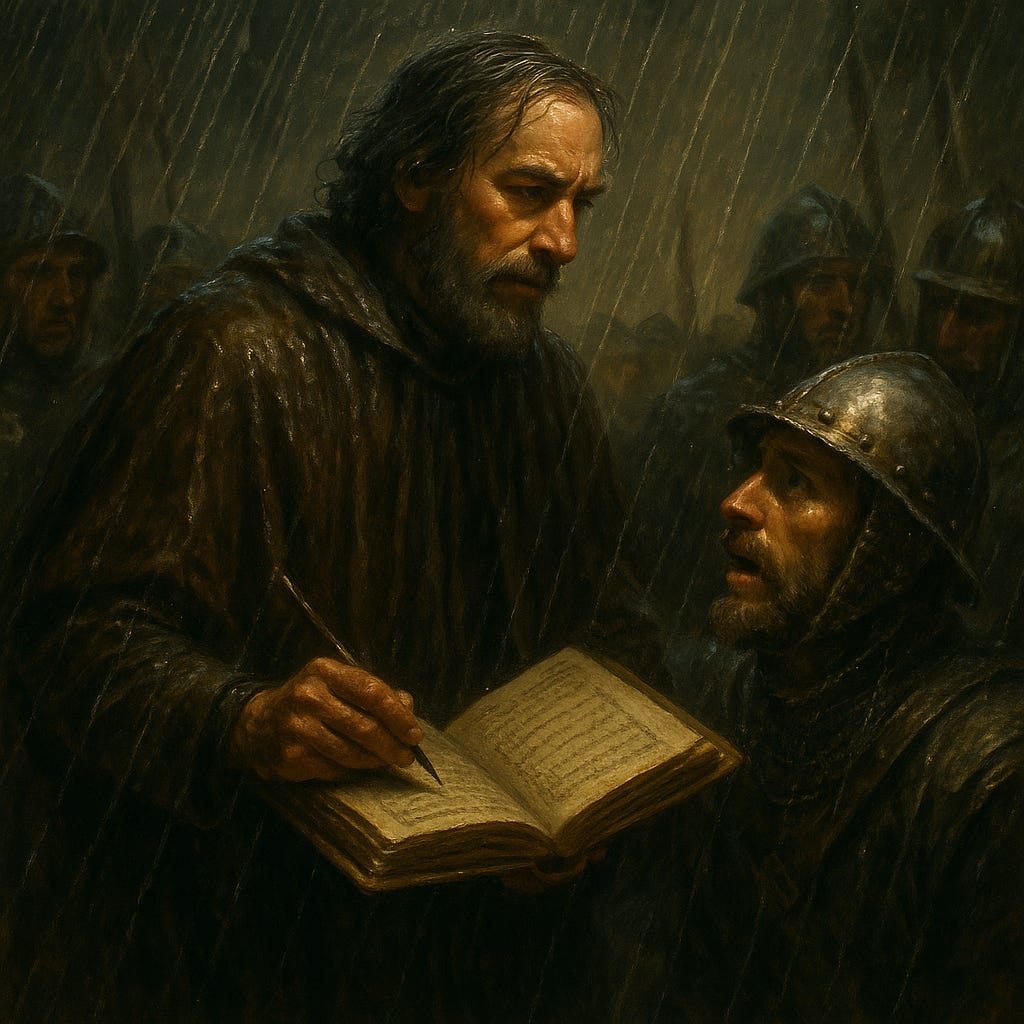Part II: The Siege, the Dowry, and the Disappearing Bride—Florence Marries Empire, Betrays the Church, and Births a Dynasty in Shadow
The ReRoute of a Rivalry Even Shakespeare Would Have Dreamt Of
Previously: From Peter’s Purse to Caesar’s Chest
Florence was a stage of fire and fear. The Guelph banners burned, the imperial eagles rose, and one man stepped through the smoke carrying not a sword but a strategy. A system, even. Averardo de’ Medici—banker, survivor, student of storms—found power in the reason of arithmetic when every creed had failed.
He watched the city purge itself. Faith fell, law bent, loyalty sold itself for coin. Yet, Averardo balanced what could not be weighed in equal measure: conscience against calculation. When knights charged, he paid the crossbowmen. When nobles fled, he paid their debts. By the time the bells stopped tolling, Florence no longer belonged to saints or swords. It belonged to the man who could count.
From his countinghouse, the Cortesi rose—the merchants who governed through ink—while the Cavallari of iron retreated to their hills. Florence became the first republic ruled by scribbles in margins wagered on the word of another. And in that fragile calm, Averardo built something larger than fortune. He built influence—quiet, total, invisible.
But empires never rest on bank books alone. Beyond the Arno, the Pope plotted from Avignon and the Emperor schemed from Prague. Florence sat between them, a jewel both coveted and cursed.

Now, the storm returns. Armies march. Dowries glitter. Faith brands Florence heretic. And while Averardo binds the city to Caesar, another Medici heart begins to break in secret—one that may undo everything his father has built.

Part II begins at the gates of Prato, where the price of loyalty will be counted in blood, gold, and love...
Keep reading with a 7-day free trial
Subscribe to ReRouted By History to keep reading this post and get 7 days of free access to the full post archives.






